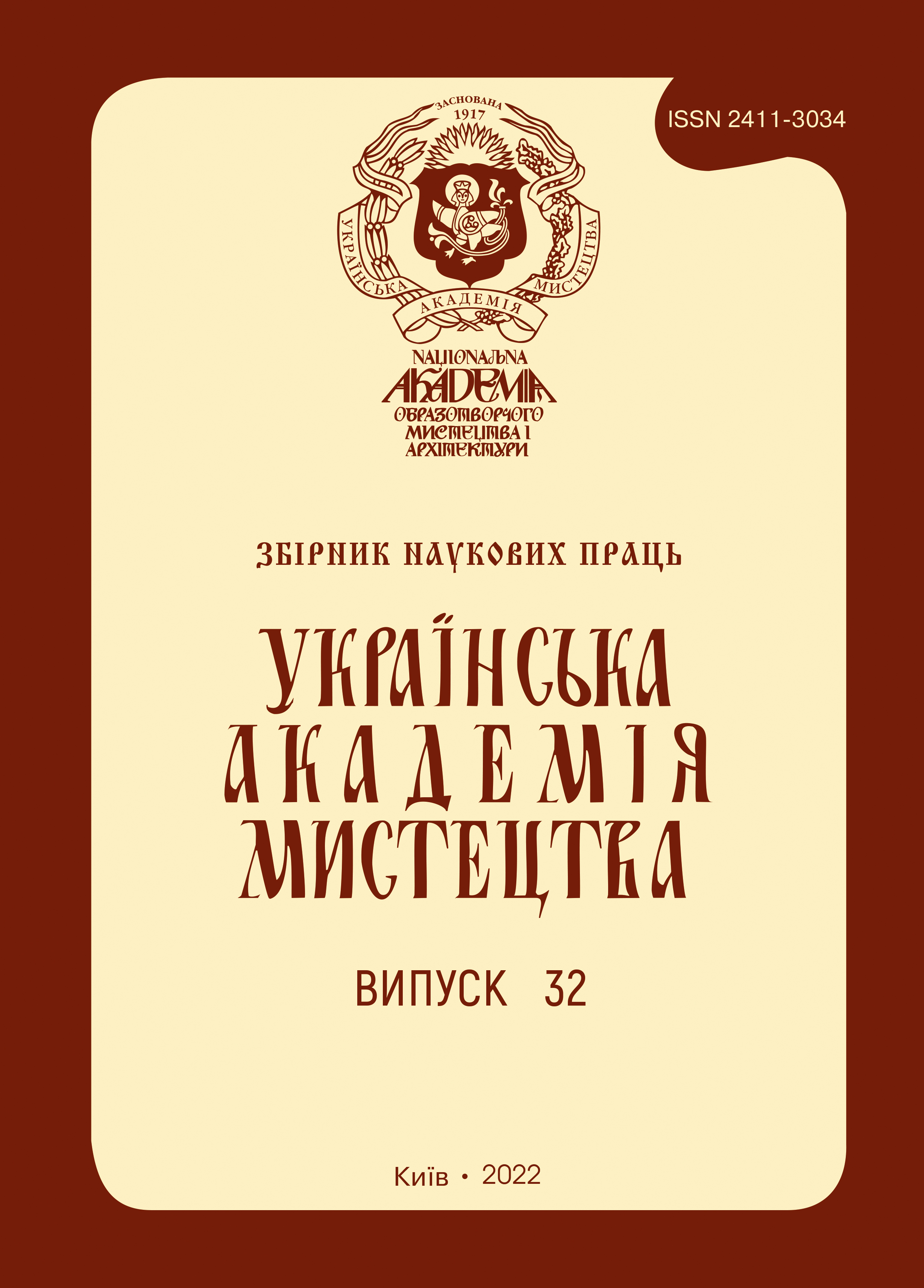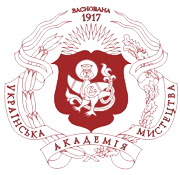PECULIARITIES OF FORMATION OF ARTISTIC-FIGURATIVE THINKING AT STUDENTS-SCULPTORS
DOI:
https://doi.org/10.32782/2411-3034-2022-32-10Keywords:
artistic thinking, artistic and creative activity, creative abilities, art education, sculpture, student sculptor.Abstract
Abstract.The purpose of the article is to analyze the features of the formation of artistic thinking among sculpture students, as it is one of the most important aims for increasing professional awareness and becoming a sculptor. The research methodology includes general scientific theoretical methods of analysis, synthesis and abstraction, which made it possible to trace the peculiarities and ways of formation of artistic thinking among student sculptors, to highlight the interaction and relationship between conscious and unconscious, rational and irrational, individual and collective. Besides, it contains aesthetic concepts, the subject of which were the issues of symbolic and naturalistic representation of reality. The scientific novelty is related to the definition of theoretical and practical aspects of forming artistic thinking among sculpture students in the process of education. Conclusions. As a result of the research, it was found out that the ways of forming the artistic thinking of sculptor students in the modern artistic and educational environment have traditional and modern approaches. The idea of unifying tasks that are opposite in their orientation, unification of personal and collective foundations, is relevant in modern art education, and its implementation is possible most in the field of fine arts in the process of education and upbringing. It is noted that, in our opinion, the main role in the formation of artistic thinking belongs to composition, which provides the most flexible opportunities for scientific and artistic-creative experimentation in the conditions of academic art education. Special attention should be paid to the issues of expanding the range of semantic signs in the language of the work, the ratio of subjective and objective factors, the influence of the arts, and the influence of the environment. It has been proven that a huge contribution to the understanding of the creative process and the formation of artistic thinking among student sculptors was made by the results of creativity and the creators themselves: painters, sculptors, architects and other artists, often acting as theoreticians and critics. A generalization is made that the era of computerization allows the transformation of academic drawing into a digital drawing, which can be partially recognized as a positive artistic and educational process, since it combines mutual influence and mutual enrichment of artistic and educational methods and techniques in the formation of artistic and figurative thinking of student sculptors.
References
Биркович Т. І., Варивончик А. В., Мазур Б. М. Особливості навчання студентів професійної майстерності в мистецьких закладах вищої освіти. Питання культурології. 2021. № 37. С. 103–113. URL: https://doi.org/10.31866/2410-1311.37.2021.236008
Мозолюк-Коновалова О. М. Вплив творчого середовища на професійне становлення особистості майбутнього вчителя образотворчого мистецтва. Наукові записки. Серія «Педагогічні науки». 2017. Вип. 152. С. 116.
Лещенко А. М. «Художня рецепція» як механізм сприйняття творів християнського сакрального мистецтва. Філософські обрії. 2015. № 34. С. 99–109.
Мазур Б. М. Українська скульптура та її вплив на художню культуру. Вісник Національної академії керівних кадрів культури і мистецтв. 2020. № 2. С. 110–114.
Писміченко О., Борисюк З. Мобільно-розвивальні засоби формування художньо-образного мислення у студентів художньо-педагогічних факультетів. Український педагогічний журнал. 2021. № 3. С. 35–45. URL: https://doi.org/10.32405/2411-1317-2021-3-45-50.
Поліщук О. П. Художнє мислення в контексті дизайн-освіти. Вісник Житомирського державного університету імені Івана Франка. 2007. № 31. С. 54–57.
Пичкур Н. А. Интеграция академического и цифрового рисунка в современной системе изобразительной подготовки студентов художественных специальностей. Revistă ştiinţifică progresivă. 2020. № 3.3. С. 9–14.
Стрельцова С. Скульптура Олега Денисенка як тривимірна археологія графічних творів. АРТ-платформа. 2020. № 2(2). С. 209–228. URL: https://doi.org/10.51209/platform.2.2.2020.209-228.
Шмельова Т. В. Мистецтво скульптури : навчально-методичний посібник. Житомир : ЖДУ ім. І. Франка, 2018. 201 с.
Штефан О. Деякі аспекти охорони прав на твори образотворчого та ужиткового мистецтва. Теорія і практика інтелектуальної власності. 2007. № 2. С. 27–31.
Przybyszewski S. Z psychologii jednostki twуrczej. Cz.I. Chopin i Nietsche. Wybуr pism, oprac. R. Taborski, BN I. s. 8.




